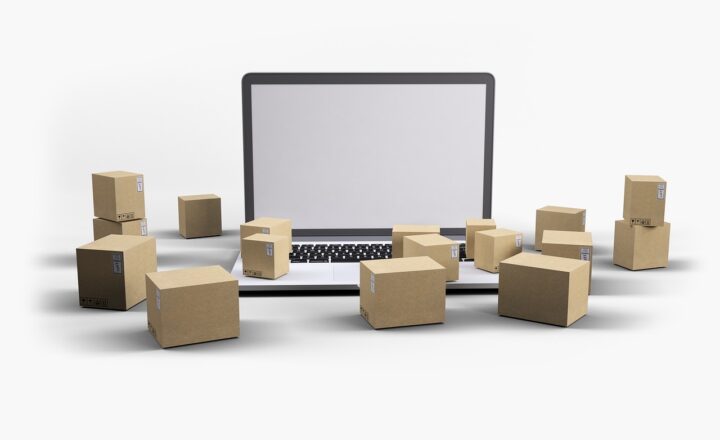E-commerce Revolution: How Online Shopping Changed Consumer Behavior Forever
November 17, 2024

The rise of e-commerce has been nothing short of revolutionary, fundamentally altering the way consumers shop, behave, and think about purchasing goods and services. As global internet penetration increases and technology evolves, the traditional brick-and-mortar shopping experience is becoming a relic of the past. This article delves deep into the e-commerce revolution and explores how online shopping has forever changed consumer behavior.
1. The Dawn of E-commerce: A Historical Overview
The concept of e-commerce dates back to the early days of the internet, with the first-ever online transaction occurring in 1994 when a CD was sold over the internet. Initially, e-commerce was limited, focusing on a handful of products and services. However, as internet technology improved and consumers became more comfortable with online transactions, e-commerce began to grow exponentially.
In the late 1990s and early 2000s, the introduction of secure payment systems, such as PayPal, and innovations in logistics allowed e-commerce platforms to offer more products and reliable delivery. Major players like Amazon and eBay dominated the market, paving the way for others to follow. Today, e-commerce accounts for a significant percentage of total retail transactions worldwide, and its impact on consumer behavior is undeniable.
2. Changing Mindsets: How Consumers Think Differently Now
One of the most significant changes brought about by e-commerce is how consumers think about shopping. Traditionally, the shopping experience involved physically traveling to multiple stores, searching for the best prices and selections. Today, thanks to online shopping, consumers have immediate access to a vast array of products and services at their fingertips.
**Convenience:** E-commerce allows consumers to shop from the comfort of their homes or on the go. This convenience has become a crucial factor in consumer decision-making. The ability to order goods and services 24/7 has led to an increase in impulse purchases and a decrease in loyalty to single brands or retailers.
**Information Overload:** With e-commerce platforms offering extensive product details, reviews, and comparisons, consumers now have more power than ever to research products before purchase. This has led to an informed consumer who is less likely to make impulse decisions without consulting reviews or recommendations.
**Customization:** The rise of e-commerce has also enabled greater personalization. Consumers now expect tailored experiences, recommendations, and targeted marketing based on their browsing behavior and preferences. From curated shopping suggestions to customized newsletters, e-commerce platforms leverage data to create a more personalized shopping journey.
3. The Influence of Social Media and Mobile Devices
The integration of social media and mobile shopping has further accelerated the e-commerce revolution. Social media platforms such as Instagram, Facebook, and Pinterest have transformed how consumers discover products and interact with brands.
**Social Commerce:** Social media has become a shopping destination. Consumers can now shop directly through social media platforms thanks to integrated shopping features. This shift has blurred the lines between social networking and online shopping, allowing users to discover products through their feeds and friends’ recommendations.
**Mobile Shopping:** The advent of mobile shopping apps has also changed consumer behavior. The majority of consumers now carry smartphones, making it easier to shop anytime and anywhere. Brands with mobile-friendly sites or dedicated apps are meeting the rising demand for convenience and immediacy.
**Influencer Marketing:** The rise of influencers has led consumers to view recommendations from social media figures as authentic and relatable. This has shifted brand loyalty away from traditional marketing strategies, making social proof an essential driver of purchasing decisions in the e-commerce landscape.
4. The Impact of the COVID-19 Pandemic
The COVID-19 pandemic catalyzed an even faster adoption of e-commerce, forcing many consumers to turn to online shopping as physical stores closed or limited occupancy. This unprecedented shift in shopping behavior had a lasting impact:
**Surge in Online Sales:** During the pandemic, many retailers experienced a dramatic increase in online sales. Consumers were forced to adapt, and even those who were hesitant to shop online were compelled to embrace e-commerce as a necessity. Many people who started shopping online during this time have continued this behavior, demonstrating a long-term shift in shopping habits.
**Increased Competition:** With more businesses entering the e-commerce space, competition intensified. Consumers began to expect quicker shipping times, better customer service, and higher product quality. This led to innovation among e-commerce players as they sought to meet ever-growing consumer demands.
**Sustainability Awareness:** The pandemic has also brought about a heightened focus on sustainability. Consumers are becoming more conscious of their purchases, seeking out brands that align with their values. E-commerce platforms are increasingly focusing on sustainable practices, eco-friendly packaging, and ethical sourcing to appeal to this evolving consumer mindset.
5. The Future of E-commerce: What Lies Ahead
As we look to the future, e-commerce is expected to continue shaping consumer behavior in exciting ways:
**Augmented Reality (AR):** Innovations like augmented reality will further change how consumers shop online. Allowing customers to visualize products in their homes before purchasing will enhance the online shopping experience and bridge the gap between online and in-store shopping.
**Artificial Intelligence (AI):** The use of AI in e-commerce will continue to rise, providing consumers with intelligent recommendations based on past purchases and browsing behavior. AI will further enhance personalized shopping experiences and customer support through chatbots.
**Virtual Reality (VR) Shopping:** The potential for virtual reality shopping is on the horizon, offering a gamified shopping experience where consumers can ‘walk’ through virtual stores from their living rooms. Such technologies may provide an immersive shopping experience that could rival traditional retail.
**Emerging Markets:** As internet access expands in developing regions, e-commerce growth in these markets is anticipated to explode. Companies that adapt their strategies to meet local needs and preferences will find new opportunities in these emerging economies.
Conclusion: A New Era of Consumer Behavior
The e-commerce revolution has fundamentally altered the landscape of retail and consumer behavior. As convenience, personalization, and technology continue to evolve, online shopping will remain a prevalent force in the way we purchase goods and services. The changes initiated by e-commerce are not merely trends but shifts in consumer behavior that are likely here to stay, shaping the future of retail for decades to come. As the lines between online and offline shopping blur, businesses must embrace this revolution to stay competitive and relevant in today’s fast-paced digital age.






